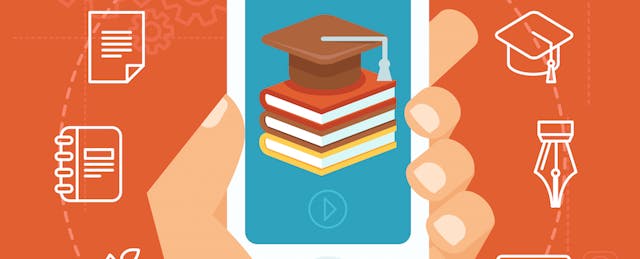When Massive Open Online Courses (or MOOCs) were first introduced, people quickly realized these platforms could help students learn more effectively at their own pace on their own schedule. “Formal” education was no longer constrained to traditional classroom hours, if it ever was.
This development, combined with tremendous growth in mobile device usage due to improved technology, naturally led to a shift in mobile learning patterns. Students were now free to engage with diverse educational content—videos, podcasts, interactive games, and so on—from any location with a cellular signal.
Despite this promising beginning, the role of mobile devices in the classroom and in education overall is still rather limited. In order to fully realize the breadth of opportunities that are available when learning is not limited to its “traditional” formats, we must acknowledge that mobile devices are not distractions when properly utilized. Instead, they are an extremely convenient way for students to access the information that is critical to their success both inside and outside school.
To make true mobile learning a reality, here is where we, as an industry, should focus:
The creation of flexible experiences
The average student juggles half a dozen—or more—classes, a variety of extracurricular activities, sports commitments, and perhaps a part-time job. He or she relies on his or her smartphone and other mobile devices to communicate, create content, and access and share information. Every app or tool that a student uses must emphasize convenience and provide the highest level of flexibility, or it is quickly deleted.
When educational resources like study materials are easily accessible via a smartphone or tablet, students can benefit tremendously. Limitations such as access to a computer and physical location are removed from the equation, and convenience enriches the new experience.
Improved integration across devices
Mobile apps, regardless of the platforms on which they run, aim to create seamless experiences. Despite this goal, it is always possible there will be moments when desktop computers, with their full keyboards and large monitors, can provide better experiences. Students may tend to think that composing an essay or conducting research is easier done on a laptop, for instance. But what happens when you are away from the computer and a promising thought about that assignment occurs to you? You might wish to capture it on your mobile device. However, at present, most education apps cannot seamlessly integrate information across platforms.
But this disconnect can be addressed. Other seamless experiences currently exist, such as listening to music with services like Spotify and Apple Music. Certain apps allow you to migrate the song you are listening to on your work desktop to your smartphone right away so it’s available for your commute home—and once you arrive, you can then transfer that song to your home speakers without missing a single beat. Virtual global connectivity should conceivably support a wide array of learning experiences, including ones where students can begin a practice test or face-to-face video chat lesson on a mobile device during their commute home, and then pick up where they left off on a desktop computer.
Innovation that better supports instructors
Much of the educational technology that has been developed for teachers is about creating compelling experiences for students. Consider, for example, Skype in the Classroom, which uses video conferencing to connect classrooms to industry experts.
Such moments can reshape a student’s opinion of education, but they do not necessarily streamline an instructor’s day-to-day responsibilities. Many of the apps that are recommended to teachers involve learning games or quizzes, while numerous others exist that allow teachers to manage assessments, homework assignments, classroom rosters, and parent communication. While the mobile migration of learning management systems (or LMS) is certainly observable, there is still room to improve this aspect of education—especially in regard to user interface. The next generation of LMS may redefine how teachers conduct non-instructional tasks and share resources, both with parents and other professionals.
The convergence of work and play
One perceived roadblock to innovation in mobile learning is the notion that smartphones are for play, not education. However, work and play are increasingly converging: it is now commonplace for a working professional to browse Facebook or Twitter to network, read an industry article, or communicate with friends; receive a work email and attend to it; and then return to browsing.
If professionals can expertly and quickly adapt to having a device that addresses multiple needs, students can too. Smartphones and other technologies like augmented reality have the capacity to make learning a far more immersive and compelling experience.
It is understandable that many teachers and parents are concerned about how much time students spend on their mobile devices, but it’s also possible that this attitude has partially prevented mobile learning from reaching its full potential. The next wave of educational technology can begin to rectify this mindset by making it easier to consume quality educational content while on the go. By combining the ideal seamless experience with better resources, we can help mobile learning fulfill its promise of democratized education.


